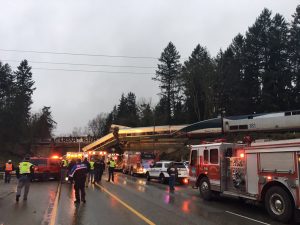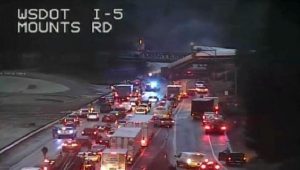
By David Shepardson
WASHINGTON (Reuters) – The National Transportation Safety Board said on Thursday that “design errors” were found in a pedestrian bridge that collapsed in March at Florida International University, killing six people and injuring eight.
The board’s investigation update said there were errors in the design of part of the 174-foot Miami span, and that resulted in an overestimation of the capacity of a critical section. The NTSB said concrete and steel specimens tested met the project’s build plans’ minimum requirements.
A crack in the bridge that was observed prior to the collapse and previously disclosed was “consistent with those errors,” the board said.
The 950-ton, $14.2 million bridge, which crossed an eight-lane highway adjacent to Florida International University (FIU) in Miami-Dade County and linked the campus to the city of Sweetwater, collapsed five days after it was installed.
In March, FIU said that engineers and state and university officials had met hours before the new bridge collapsed, but concluded a crack in the structure was not a safety concern.
In August, the NTSB released photos of larger cracks from before the collapse that had been previously known.
The NTSB said Thursday it had not made any conclusions about the probable cause of the collapse and that the “investigation continues to examine the design, review, and construction processes as well as the actions taken once the cracking was observed.”
A spokesman for Florida Senator Bill Nelson said Thursday’s findings did not address the question of “whether there was proper oversight by regulators in the design and construction of the bridge.”
FIU and the Florida Department of Transportation did not immediately respond to requests for comment.
The Miami Herald reported last month that FIU had not decided whether to rebuild the bridge.
The assessment of design errors was made by the Federal Highway Administration, the NTSB said.
(Reporting by David Shepardson; Editing by Chizu Nomiyama and Bernadette Baum)



